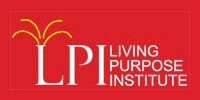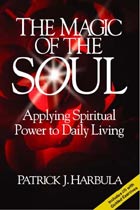ONE VIEW OF ….. Vipassana
…body sensations are a mirror for
One’s entire emotional life!
By CHARLENE SZYMUSIAK
Coming from our own Venice Beach, Shinzen Young traveled around the world to return as teacher to motivated Angeleans. Along the way he has passed through emotional Samurai movies, the physical movements of karate and the mental discipline of Western academia. He now resides as spiritual leader at the Community Meditation Center in Koreatown.
Shinzen shared the following teachings with me. If one thing seems to have stuck, it is the simplicity!
Buddha lived about 2500 years ago. His teachings grew out of –but are quite distinct from –Hinduism. Buddhism evolved within India, until it virtually disappeared there around 1200 AD.
The early form of Buddhism, as it existed in India, is Vipassana. [vee PAAS uh naa] A later adaptation of Buddhism, also originating in India, is Vajrayana – which was carried to Tibet and is preserved there. Buddhism spread to China and Japan, where the Indian forms were modified to suit local cultures. Zen is one such modification. These are cultural differences or historical differences. There are also differences in the emphasis on practice between these three schools.
The main characteristic of Vipassana meditation is a process of systematically observing the mind and the body. Briefly, by observing the mind and body in a certain way, one can come to a state of liberation whereby one does not feel limited by them – that’s the technique of Vipassana in a nutshell. The specifics of what that systematic way is could go on and on.
To experience insight or liberation is only half of Buddhism. All the schools of Buddhism, whether Vipassana, Zen or Vajrayana have four practices in common. They may develop the practices in different ways and they have different emphasis but every school of Buddhist practice contains these four categories of practice.
The first is called sila, which means self-discipline, character, morality – having a wholesome lifestyle. It’s very difficult to enter into practice if you don’t have some self-discipline, some self-control and a basic morality in your life. If you are completely indulgent or harming other people, you are not going to be able to sit down and accomplish anything. You have to be able to make commitments and hold them.
Samadhi is the second practice. It develops calm, concentration and one pointedness. Typically a Samadhi exercise would be observing the breath, counting the breath or chanting mantras.
If we have, say, just the self-discipline, that’s not enough. Even if one has a lot of calm and concentration, that’s not enough. There is something beyond, that arises within the calm of Samadhi – which is panna: insight and understanding.
There are various facets to these understandings, which deal with the most basic issues of a human being. You get an insight into how to experience “unpleasant” feelings without them turning into suffering. Your mind understands, how you can live life without suffering. That’s real basic; that is fundamental. You get insight into the nature of the feeling-self. You get an understanding of how the sense of self arises. The understanding allows you not to be limited by that sense of self.
The insights of panna involve very, very deep issues. Any problem you are likely to have is going to center around some form of suffering or ego limitation. When you get an insight into something really fundamental —like the nature of suffering or the nature of ego – then you’ve got a handle on many, many specific problems that may come up in your life. Each moment of one’s life is totally transformed after having had that insight.
The practices of Buddhism all reinforce each other. On one hand, you can see a general progression. You have to have sila to develop Samadhi. You have to have Samadhi to develop panna. You have to have panna to develop what is going to come next. On the other hand, they all cycle around and interlink with each other. The more panna you have, the more you can develop your moral life, because you are liberated – it is the product. The more you understand, the less your mind is driven. They all help each other.
These first three – sila, Samadhi, panna – are what you do for yourself to become a together, calm and liberated person. They are what you do as an individual to be happy and to have unconditional freedom and fulfillment.
The last of the four practices is metta/karuna. When you have come to the profound insight of panna, you realize that in a very real sense, you share a larger identity with the entire planet and with all other beings.
So then the meaning of your practice expands. It’s not just to set one particular mind and body free. You realize there is your larger mind and body which happens to encompass this smaller one and a vast multitude of others.
What do you put out into the planet for this larger identity? The practice of metta/karuna. Metta means loving kindness. It’s a vibration of love that you actually generate and carry with you throughout the day – like a cloud outside you.
Karuna is compassion. It is the ability to draw the poison and pain out of the people you meet and help them become free from suffering itself. One must have panna to develop karuna. One must have insight to develop true compassion, because otherwise you get caught in the poison and pain of others. That liberating insight is what allows you to “take the garbage out without having the smell stick to you.”
Many people try to do “good” – which is admirable – without being free, really free, from their own minds and bodies. When they encounter the pain and poison of others it remains in their own minds and bodies.
The ancients understood this very well. This is a balanced practice. It covers everything, but nothing is superfluous. Everything that needs to be – yet nothing unnecessary – is covered in these four practices. That is Buddhist practice. That’s the eternal practice. It doesn’t have to be limited by the name Buddhism. Buddhists, if they really understand the teachings, don’t have to use the word Buddhism.
Most people, if they are highly motivated and have received competent instruction and have kept up with their practice for a long time, could attain liberation. People fail in motivation, or there is some aspect of practice that hasn’t been made clear to them or they drop it for something else.
That’s my Western mind coming out. The Eastern mind says it’s not quite that simple because there’s karma. People carry a different kind of burden. Some people just don’t move very fast on the path.
Usually it’s that they haven’t made enough merit yet. Not necessarily that they are carrying a lot of bad stuff. When you ask, in traditional Asian context, “Why is it that so-and-so has been meditating for ten years and yet hardly has any Samadhi? What to say of liberation?” The answer won’t necessarily be that they killed their mother in 500 lifetimes. It’s probably more in the lines of they haven’t been ready to serve people yet, they didn’t seek merit by giving up the something.
Back to motivation. First, one can be inspired by other people that practice. Secondly, in meditation one does get glimpses of what could be. These can further motivation. Next, the competency of one’s instructor is very important.
How does one choose a teacher to study with? One begins by recognizing that the path is one’s own. Beware of devoting oneself to any one individual or personality. Look for a person as instructor who lives a life of self-discipline and morality. Ask yourself, “Does what they teach make sense? Is it wise?” If any fees are involved they should be reasonable.
Look to the results of the teacher’s instruction. Are the other students calm and alert? What is their day-to-day, mundane attitude? How is their perception of a drive on the freeway? How do they relate to a confrontation at home or at the office? How do they deal with their eating behaviors? Are they driven or in control?
When you are around this teacher’s students, are you calm and relaxed or do they make you feel uptight? If you see positive results in the students, then perhaps this is a competent teacher.
Many times, what is looked for is something completely irrelevant and specious: “What kind of far-out experiences do I get? What sort of entertaining altered states of consciousness can I experience? Visions, white light, bliss, odd postures that automatically come. What sort of psychic phenomena happen around the teacher?”
All of these are what many people call results. I consider them not to be in the category for judging teachers.
What kind of vibes do you get from that teacher’s student when the student finds out that one of his slippers has accidentally been taken by another student outside the mediation hall? That’s how I judge a teacher.
The four practices are the main framework of Buddhism. The way we cultivate it is to give a person a very simple concentration exercise. We give them a meditation focusing on the breath, a very neutral object. Basically this is an observation meditation. We tell them to do it at least twenty minutes to one-hour-a-day, and to do it every day until they can develop a little bit of concentration.
At first the mind wanders, of course, so we give lots of feedback about how to bring the mind back to the object without feeling frustrated or forcing it. After a little while most people do feel their attentiveness becomes stronger. The breath typically slows down a little bit and the mind doesn’t wander so much. At that point they have begun to experience some samadhi. Once that has been developed, we have them shift the focus of attention from just watching the breath to a process of scanning the body sensations.
Some people may wonder, “Why look at that, when there are so many things you could look at?” For example, some people meditate by visualizing something positive. The reasons for observing body sensation are that every change in a person’s feelings reflects itself in a change in the sensations of the body. The body sensations are a mirror for one’s entire emotional life. People often perceive their problems as outside themselves: “I have a problem with so-and-so at work.” “I have a problem with this situation.” “This situation is my problem.”
Actually the problem, if you are suffering, is your own feelings. Traditional psychology recognizes this but usually doesn’t take people any further. It helps people recognize the locus of suffering is not outside but rather inside. Once they know that, so then what? They still suffer, they still hurt.
This world has every potential to be satisfying. However there is something getting in the way of perfection. We don’t feel completely happy and fulfilled and free every moment. Yet we should and can.
We can’t see the interfering force directly because it is so deep. We can however develop a very special form of sensitivity whereby we can observe this deep interfering force as it is reflected in the time/space framework of sensations in the body. As we develop this sensitivity, the negative patternings start reflecting themselves in sensation. They literally float to the surface as sensations, where they are observed from a special perspective. A natural process is initiated and the negative patternings break themselves up.
As meditators with this technique, we do basically three things. We try to be more precise than usual about body sensations. We try to be less interfering than usual with the spread of these sensations. If they are unpleasant and they want to get bigger, let them get bigger. If they are pleasant, but fading away, let them fade away. Third, we try to be aware that his growing and fading away is constantly changing, impermanent.
When we start to watch our feelings as flowing events in nature, we see that pleasure and pain have a hidden function that most human beings are not aware of. All are aware of the function of pleasure and pain as sort of guides. Pleasant sensations move a person toward what is wholesome for that person. Unpleasant sensations signal what is unwholesome.
What we often don’t understand is that there is a second purpose in nature for pleasure and pain. That purpose is that they are tools whereby the network of self-limiting forces can be broken down. We can bring the ego to a state of fluidity. The sense of self goes from being-self-as-a-vulnerable-particle, to self-as-a-fearless-interacting-wave.
By developing this skill of feeling, body sensations can become a crystal clear screen on which the unconscious mind is reflected. You initiate a process whereby those negative forces literally untie themselves. It’s an internally generated biofeedback loop, but it works better than any external biofeedback in terms of transforming people radically.
Buddhist practice is for anybody who wants to do it. It is very systematic and very straightforward. It’s for anybody who would like radical transformation – but not everybody does.
Radical transformation is well defined. Radical means going to the root. Radical transformation isn’t just being adjusted or having a spiritual high. It means that, within a few years of doing this practice, you will open your eyes and gaze upon your original perfection. It means that your day-to-day conduct –how you relate to other human beings, temptations and pressures – will begin to reflect that perfection. That’s radical change!
The Community Meditation Center is at 1041 South Elden Avenue, Los Angeles, CA 90006, (213) 384-7817. They offer regular classes, lectures and retreats.
For more articles from the Meditation Magazine Archives, please visit this link:
http://livingpurposeinstitute.com/articles-2/meditation-articles/
For information on Living Purpose Institute: life coaching, life coach training and certification, workshops, classes, meditation ceremonies, ceremonial sweat lodge ceremonies, retreats, videos, and much more, please visit:
http://livingpurposeinstitute.com/
For a complimentary life coaching session.
Call: 805-469-9847
Living Purpose Institute
2593 Young Avenue Thousand Oaks, CA 91360




